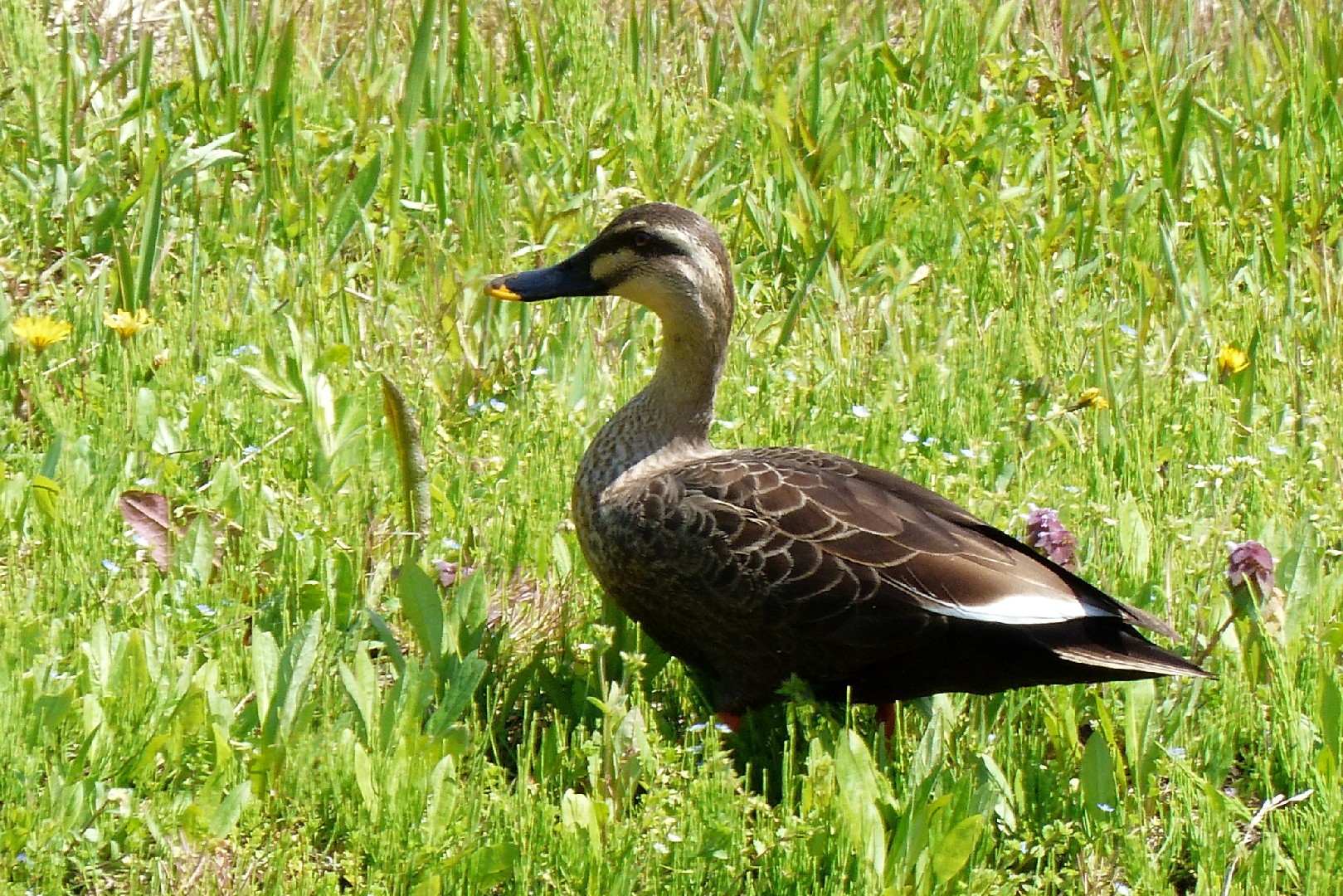Eastern Spot-billed Duck
A species of Anas Scientific name : Anas zonorhyncha Genus : Anas
Eastern Spot-billed Duck, A species of Anas
Botanical name: Anas zonorhyncha
Genus: Anas
Content
Description General Info
 , used under CC-BY-SA-4.0 /Cropped and compressed from original
, used under CC-BY-SA-4.0 /Cropped and compressed from original Description
A social duck that forms small flocks, the eastern Spot-billed Duck is primarily found in freshwater marshes and lakes. It has a call similar to mallards but its darker feathers set it apart. It is most visible in the evening when the duck ventures into open areas to feed on aquatic plants.
Size
41 - 81 cm
Nest Placement
Ground
Feeding Habits
Eastern Spot-billed Duck primarily consumes seeds, grasses, sedges, and aquatic plants, supplementing with water insects, larvae, worms, molluscs, and snails. Eastern Spot-billed Duck's foraging involves dabbling on the water surface, with occasional grubbing for prey. Eastern Spot-billed Duck exhibits no unique dietary adaptations.
Habitat
Eastern Spot-billed Duck commonly inhabits a variety of wetlands both inland and along coastal regions. These areas are characterized by open lowlands and shallow fresh waters, including tidal and brackish environments, with a preference for sites with abundant emergent vegetation. Geographically, eastern Spot-billed Duck occupies regions with these habitat features, which may extend up to an elevation of 3350 meters during migration, particularly noted in parts of Southwestern China.
Dite type
Omnivorous
General Info
Feeding Habits
Bird food type
Distribution Area
The eastern spot-billed duck is migratory, wintering in Southeast Asia. It is quite gregarious outside the breeding season and forms small flocks. The populations in Japan and the Russian Far East have expanded their range northwards by more than 500 km since the early 20th century, possibly in reaction to global warming. It is a bird of freshwater lakes and marshes in fairly open country and feeds by dabbling for plant food mainly in the evening or at night. The breeding season varies with rainfall and water condition but normally between April and July. It nests on the ground in vegetation near water. The clutch is usually 7-9 eggs. Incubation begins after the last egg is laid (allowing the chicks to hatch simultaneously) and the young hatch after about 24 days. The chicks are black with a yellow back and resemble those of mallards but with a wider eyestripe. Both the male and female have calls similar to the mallard. 